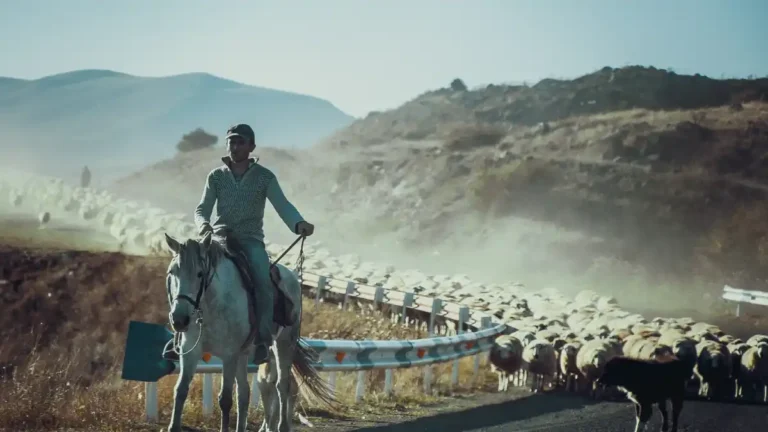Buried Roads, Forgotten Warmth, and the Climate Myths We Refuse to Melt
In 2011, high in the howling wilds of Norway’s Lomseggen mountains, a glacier cracked open—not with fossils or bones, but with memory. The Lendbreen ice patch, long sealed like a conspirator’s vault, began surrendering what it had hidden for centuries: the echo of forgotten footsteps.
What emerged was not a burial ground, nor a battlefield, but a road. An ancient path once used by Norwegians to traverse the spine of their country. A team from the Inlandet County Council, the NTNU University Museum, and the University of Cambridge descended on the site—and what they found was nothing short of a Viking time capsule.
Artifacts, scattered like breadcrumbs across the centuries, dated from 300 CE to 1000 CE. This mountain pass, while short, had been well-marked—deliberately laid out to guide travelers in an unforgiving landscape. At least twice, it had seen centuries of use before falling into disuse again, buried once more under an icy hush. When the 14th century brought colder climes, the pass became impassable—forgotten, literally frozen out of memory.
This post first appeared in 2020, back when I still entertained hope that rational arguments might sway public sentiment. I’ve since remastered it—sharpened the edges, clarified the threat, and realigned it with the Grimwright ethos: use what works, discard the rest, and always—always—question the narrative. The date remains unchanged as a historical marker. The content does not.
Curiously, the periods during which the pass was open line up with two climatological anomalies the climate priesthood would rather you forget: the Roman Climate Optimum and the Medieval Climate Optimum. Two stretches of time where warmth—not manmade, not industrial—descended upon the earth and opened high mountain arteries for human movement.
We know a great deal about those warm spells. Temperatures during both were likely higher than today—so much so that areas which are now locked in ice were then green and alive. The Roman Warm Period, in particular, is well documented—thanks not to modern climatology, but to Roman tax collectors. Bureaucracy, it turns out, is the best historian.
But these episodes are awkward guests at the climate table. They happened long before coal plants, SUVs, or the Exxon Valdez. They weren’t man-made, so they must be minimized, explained away as “regional,” or buried under name-calling. Raise them, and you’re not simply wrong—you’re a heretic. A denier.
The truth? These warm spells were natural. They stem from Earth’s slow dance through space—shifts in axial tilt, Milankovitch cycles, and the twitchy moods of our Sun. They need no human help to manifest. They never did.
Let’s return to Lendbreen. Perspective matters. For all of the 19th and 20th centuries—and likely some time before—this pass was sealed shut. Not just unused, but forgotten. No one alive remembered that, during the Medieval Warm Period, it had been an artery of travel.
Now, keep in mind: transportation tech 800 years ago wasn’t exactly high-speed rail. If people could use that pass back then, it must have been warmer than the last two centuries combined. We don’t need thermometers to see that. We need only follow the footprints emerging from thawing ice.
And Lendbreen is far from alone. In this Modern Warm Period, as ice relents across the world, a flood of revelations follows. The ARD television network aired a segment on March 11th, 2020, covering graves of whalers found on Spitzbergen. These weren’t skeletons in permafrost—they were buried in soft dirt. In coffins. During the Medieval Climate Optimum.
Which means: the ground was not frozen. Spitzbergen and Jan Mayen sit far to the north of mainland Norway and are permafrost-locked even in modern summers. That kind of burial requires not only warmth, but sustained warmth—long enough for deep frost to melt. Not a fluke season. A climatic shift.
You don’t bury your dead in rock-hard ice. You bury them in earth you can dig. And that kind of soil hasn’t existed on Spitzbergen for a very long time.
Shift west. Greenland looms. And even there, the ice is giving up its ghosts. Beneath the thawing permafrost, whole forests re-emerge—rootstock intact. There were trees where now there is only glare ice. Entire human settlements—complete with churches, garbage dumps, and children’s toys—are resurfacing. Not hunting camps. Villages. Places where people lived and died. Where families grew, prayed, quarreled, and buried their dead.
Hunters don’t bring wives, children, or clergy. They rotate in and out. These weren’t camps. They were colonies. They were civilization, in miniature. Greenland wasn’t a joke name. It was a description.
And carbon dating confirms: those forests were real, recent, and green. Not hundreds of thousands of years old. Hundreds. All pointing to a reality that dares to contradict the dogma: it used to be warmer. Significantly so.
Yet from the climate zealots we hear the same refrain: “It’s warmer now than at any time in the last 11,000 years—and it’s all your fault.” Meanwhile, pollen records from Africa, borehole data from South America, and studies from Tibet suggest otherwise. The warmth was global. The Medieval Optimum wasn’t a quaint European fluke. It was a planet-wide phenomenon—a warm sigh from the Earth itself.
Even Antarctica joins the choir. Ice cores from the Vostok station echo the same pattern. The Medieval Warm Period was real, global, and prolonged.
And what’s true of that period is also true for the Roman Climate Optimum—and the others that came before. These were natural cycles. All of them. Because before the smokestack and the piston engine, there were no emissions to blame. Yet warmth came anyway.
So why do temperature graphs always seem to go up and to the right?
Because choosing your baseline is the oldest trick in the statistical book. You don’t start your model at the peak of the last warm period. You start it in the trough that followed—the Little Ice Age, which bottomed out sometime after 1600. Start there, and any modern uptick looks apocalyptic. Neatly timed, of course, with the Industrial Revolution.
It makes for a seductive story: humanity begins to burn fuel, and the Earth begins to burn up. Graphs climb. Politicians panic. Children chant.
But how does this explain a thousand-year-old mountain pass? Buried whalers? Forests in Greenland? It doesn’t. It can’t. And so those questions are never answered. They are exorcised, not debated.
Because any theory that can’t explain how it was warmer before factories and fossil fuels is not science. It’s séance. It’s a techno-priesthood, complete with sacred charts, infallible models, and inquisitions.
If you want a true baseline for climate, don’t pick 1850. Pick the last 11,000 years—the span in which humanity climbed out of the mud and into cities. Any theory that fails to explain prior warmth during that span isn’t worth debating. It’s not a theory. It’s a sermon.
And sermons belong in temples—not science.




